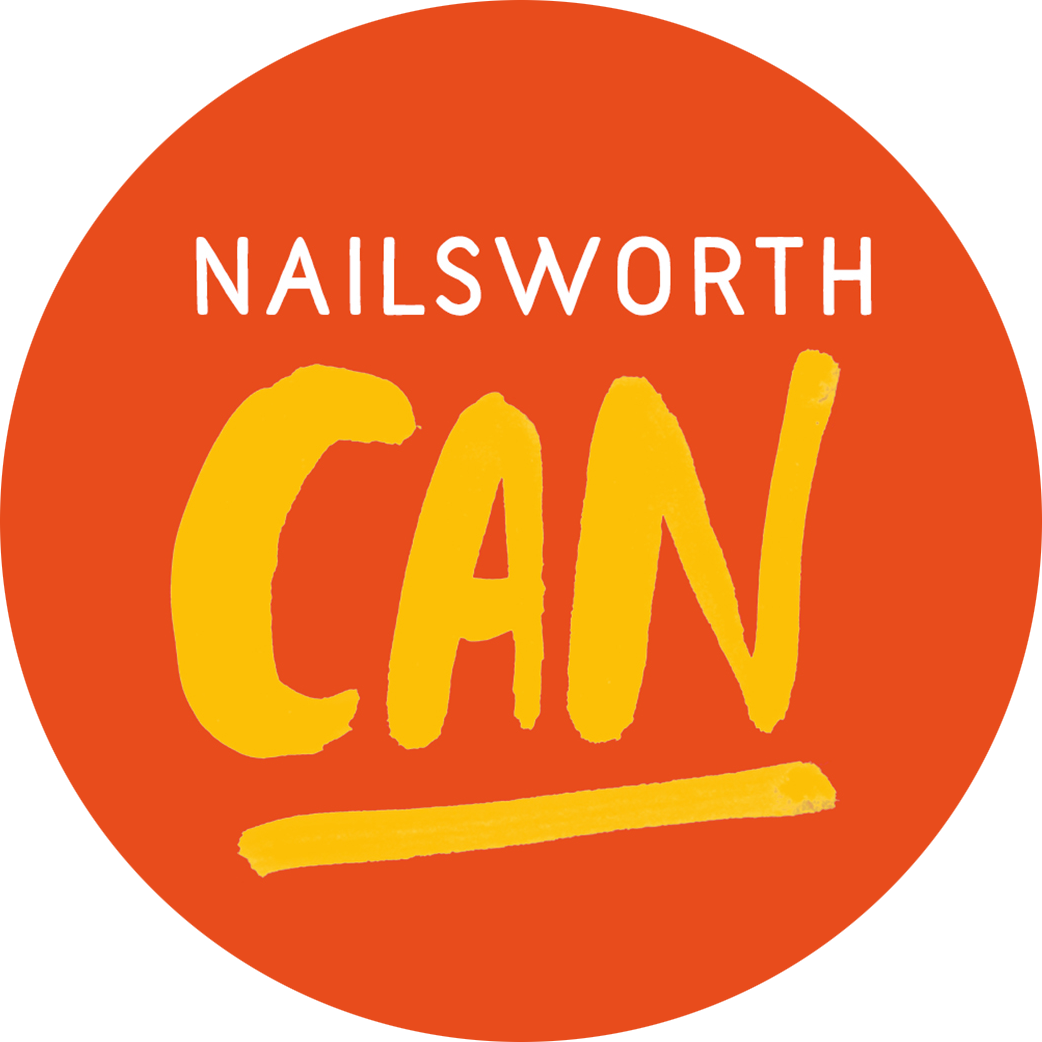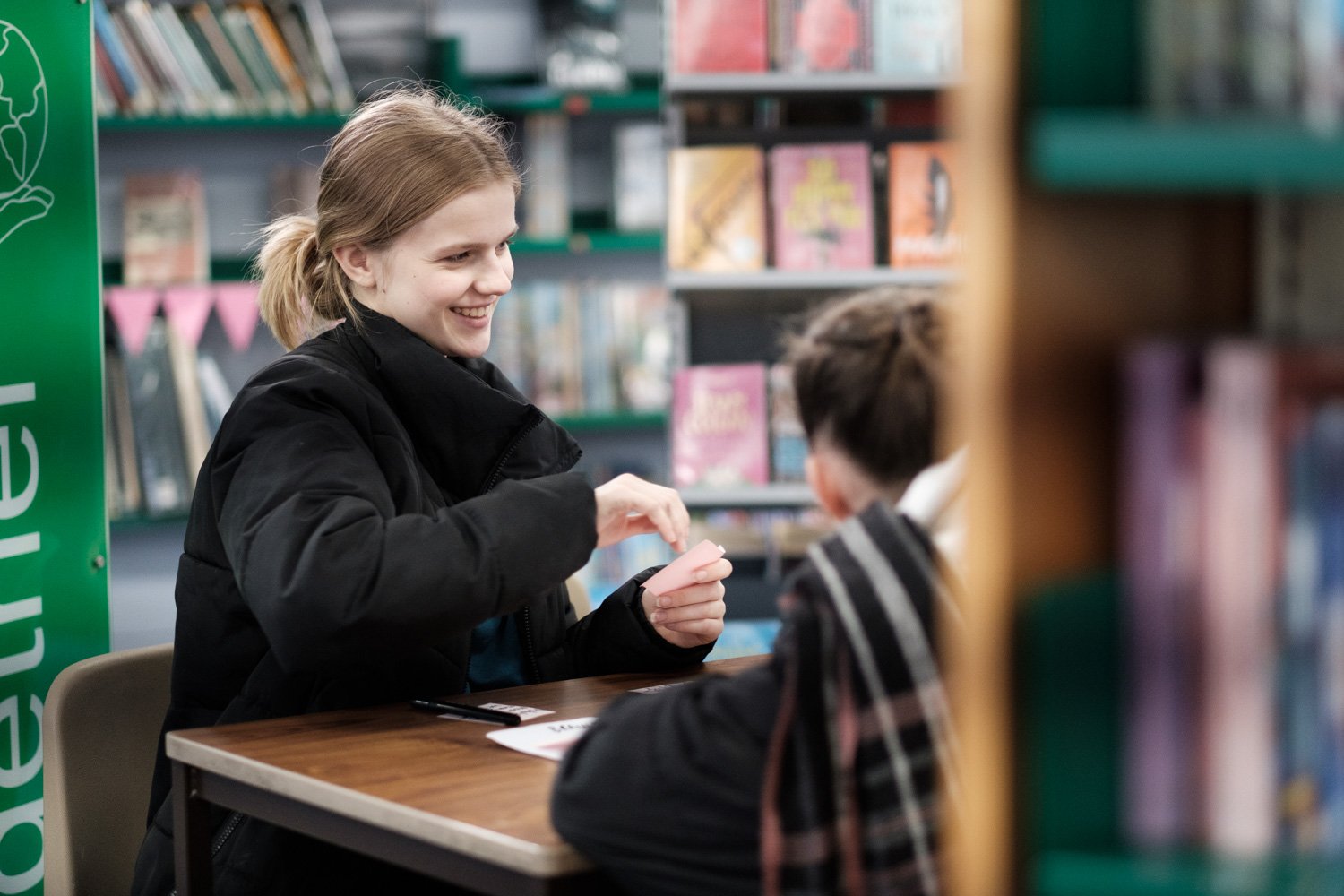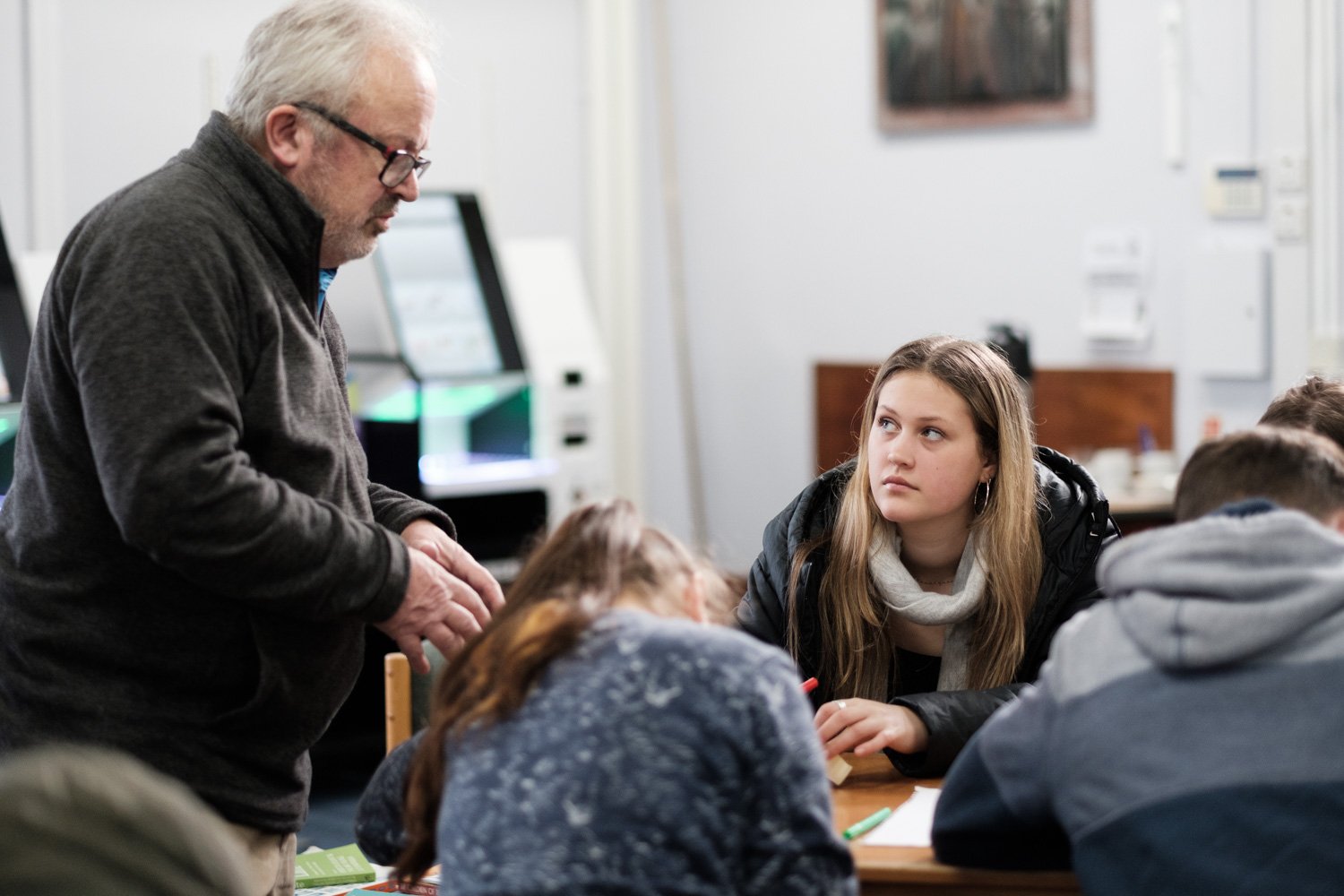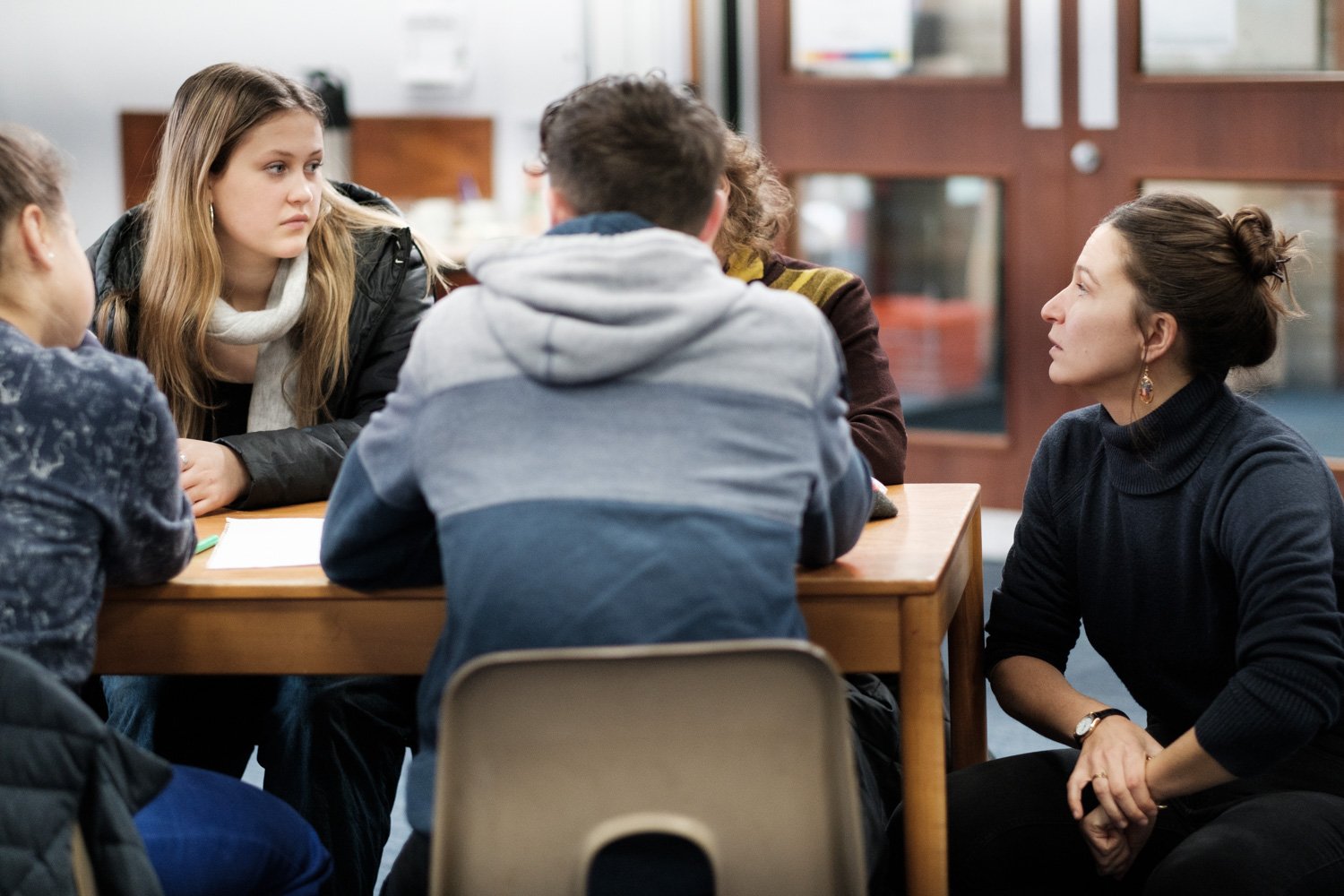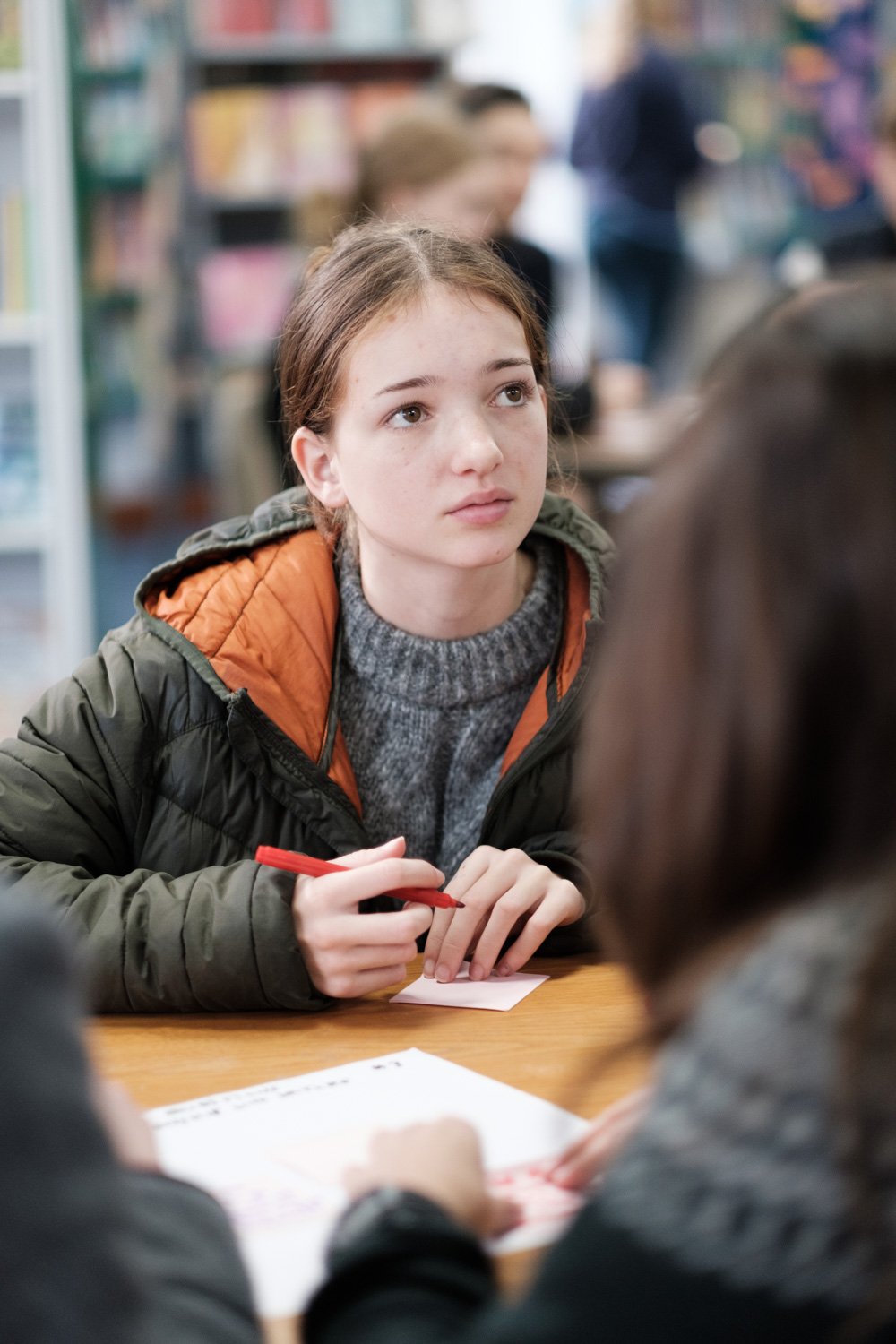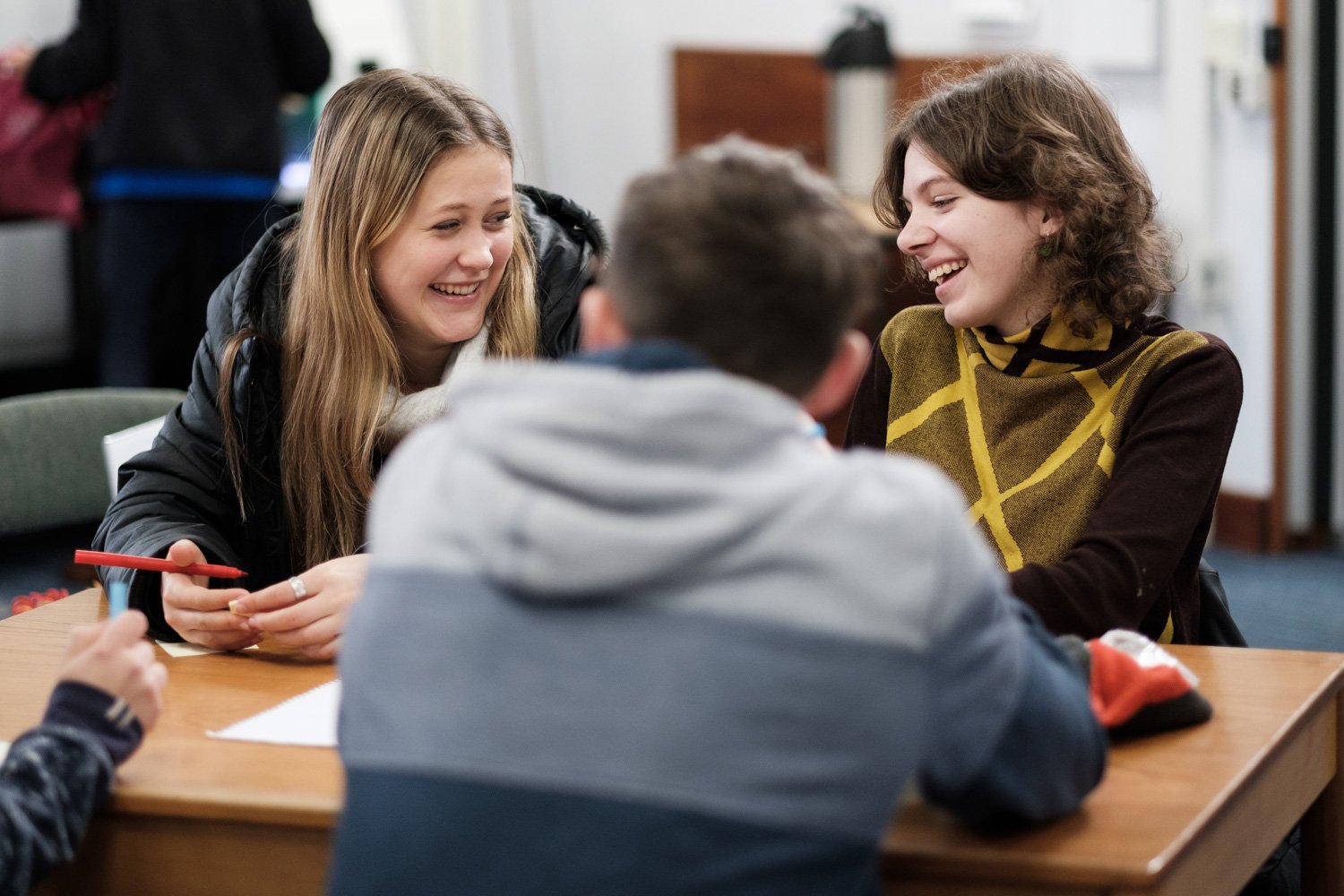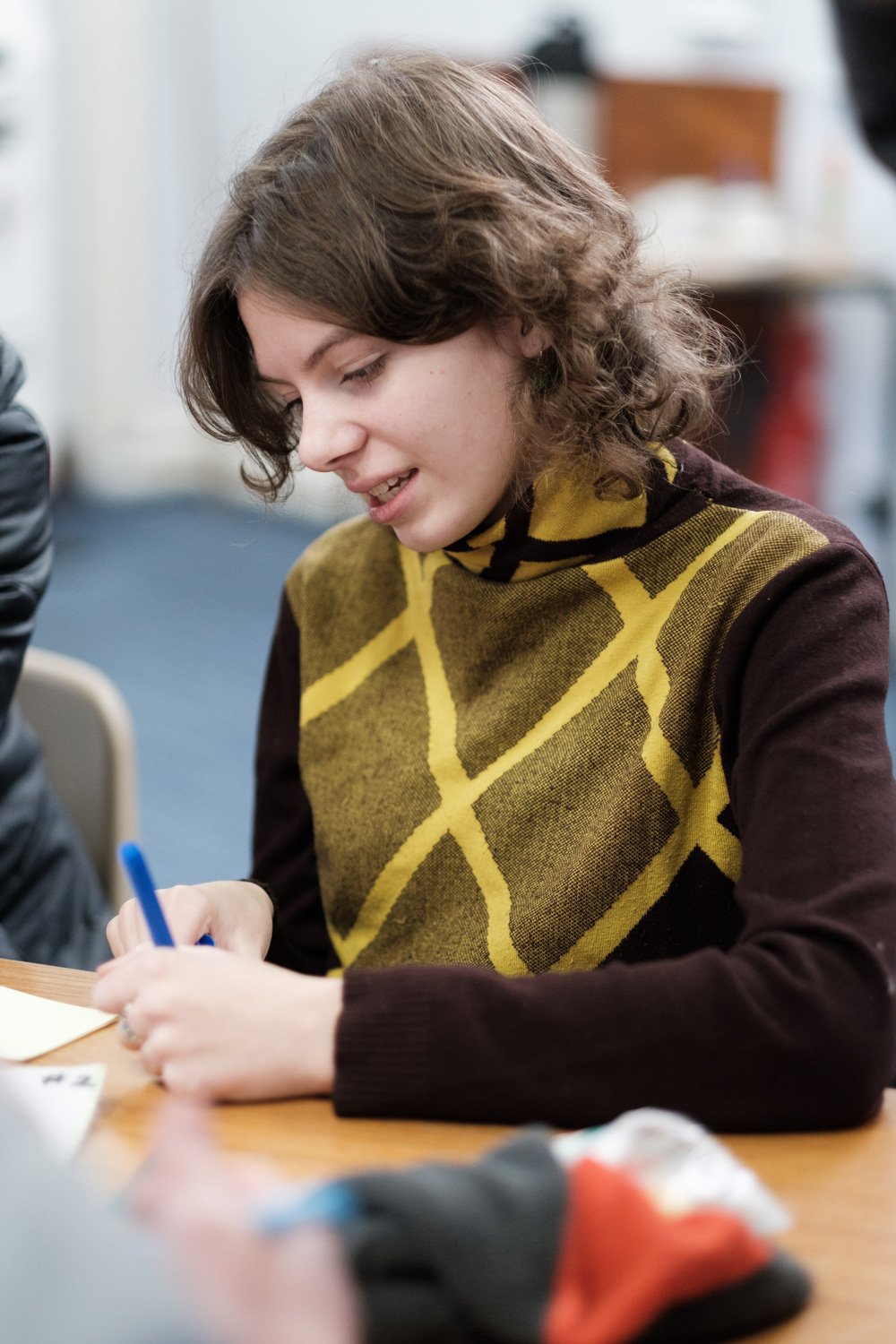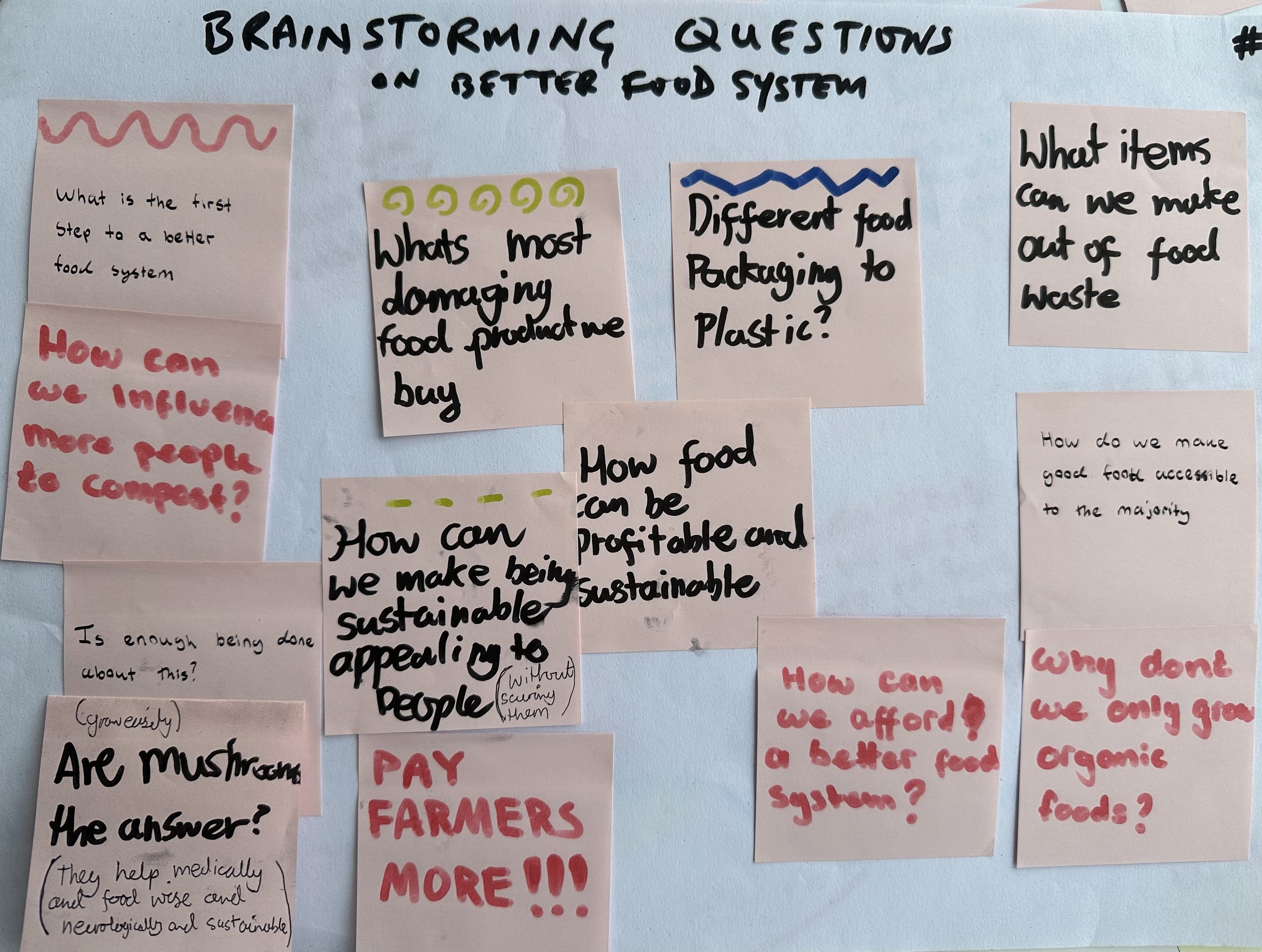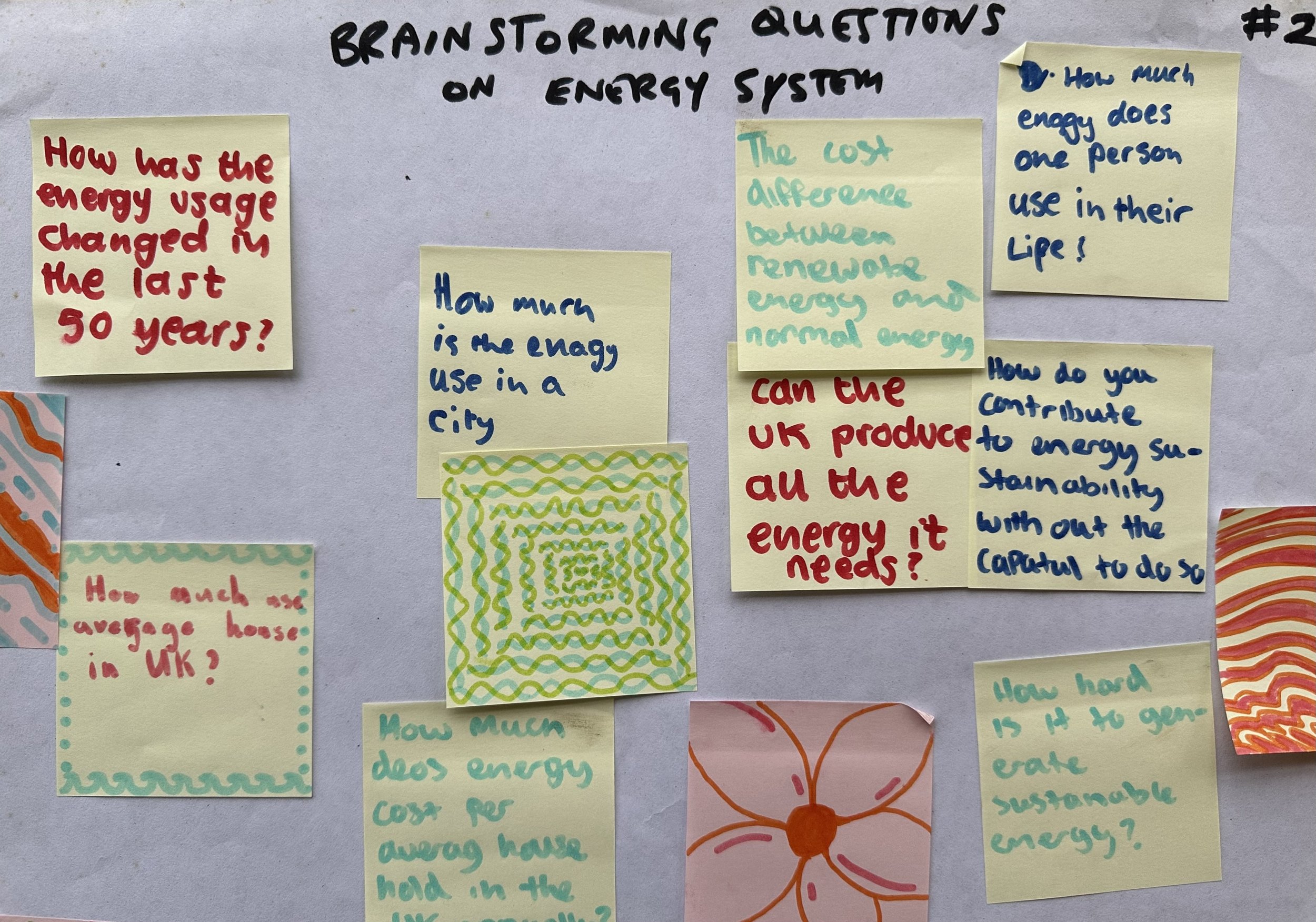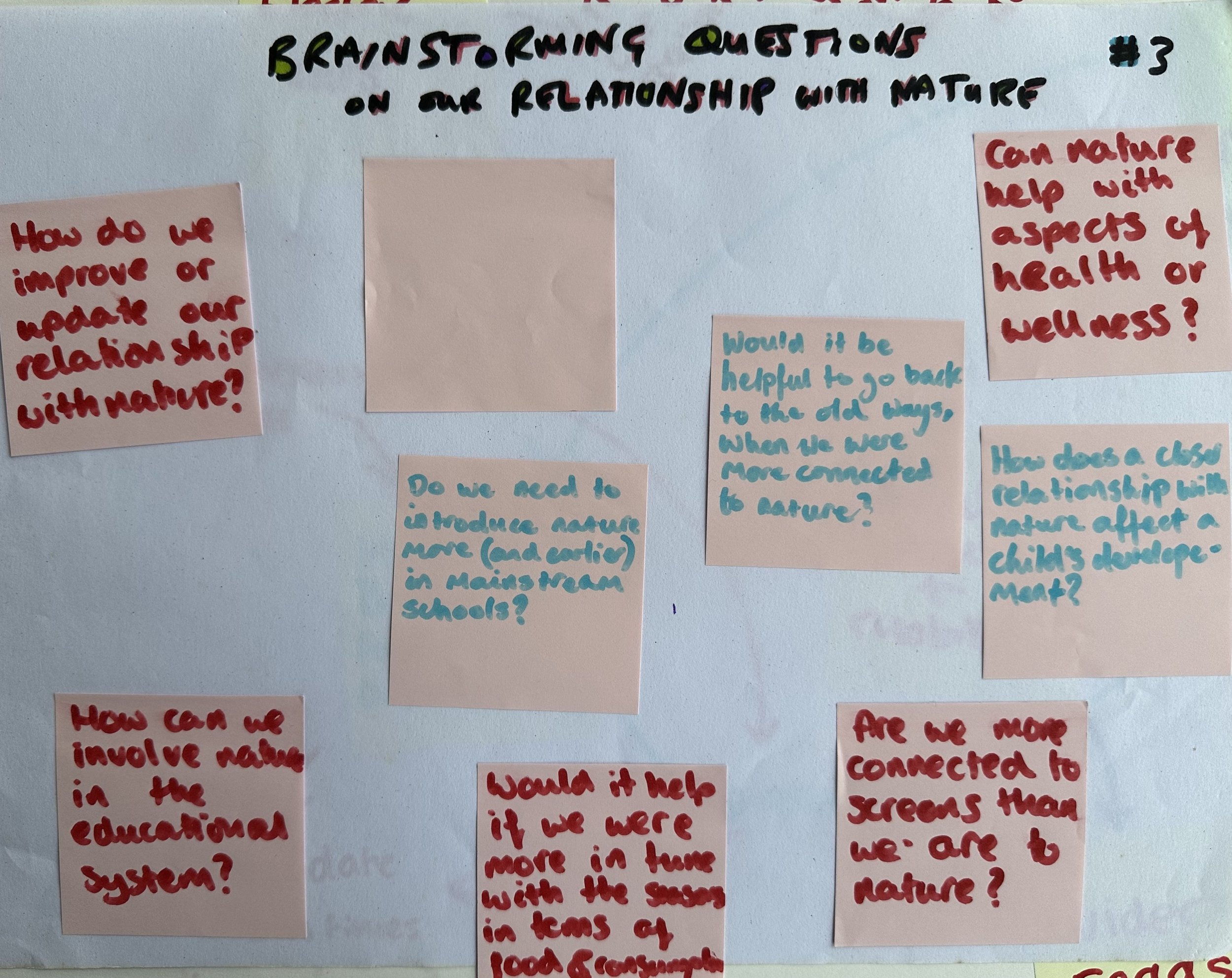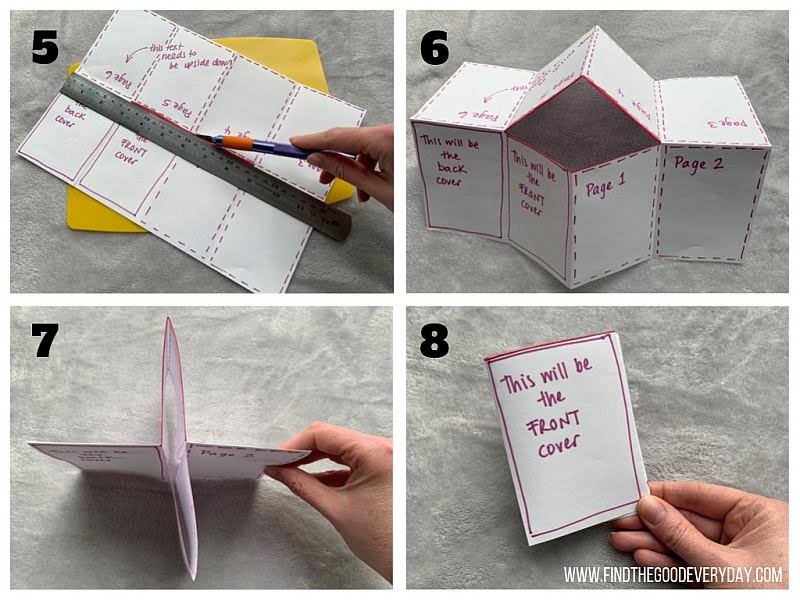Exploring social justice and climate change - a workshop for students
On Friday 1st December 2023 a group of twelve Year 10/11 students from Acorn School attended a workshop at Climate Corner held at Nailsworth Library, and convened by Dr Richard Erskine, Education lead for Nailsworth Climate Action Network, and supported by their teacher Sarah Andrzejewski.
Photographs by: Jen Adams
The workshop used an interactive approach to explore questions and ideas on a variety of topics.
Climate action update
Richard provided a short update on climate change news, in particular the climate conference meeting in Dubai (COP28). This was followed by a Q&A. The good news is that a ‘loss and damage’ fund has now come into operation, to help nations severely impacted by climate change. There is also talk of a commitment to triple the capacity of renewables like solar and wind. The less good news is that fossil fuel lobbyists have hugely increased their presence at the conference compared to previous years.
Fossil fuel interests seem determined to keep discovering new reserves, even though the International Energy Agency says we can reach net zero by 2050 without needing any new wells to be drilled. The science is clear, we need to stop burning fossil fuels as soon as possible.
Brainstorming Questions
The first exercise was to brainstorm questions around particular topics, like food. Anyone could ask questions, which made this a very inclusive exercise. You don’t have to be an expert on a subject to ask a question.
Richard illustrated this point with the example of a new civic building, which turned out to have poor disabled access. Was a disabled person, or someone who cares about disabled people, in the room when the building was planned, able to ask the simple question ‘Will there be disabled access?’. Getting to better solutions is about asking lots of questions, from many points of view.
However, during the exercise the students were asked to avoid jumping to answers, or even discussing the questions, but simply to come up with as many questions as possible in the ten minutes they were given. Questions can be quite narrow ones (often called ‘closed questions’), like the disabled access question, or broader ones (often called ‘open questions’) such as ‘what is the vision for the new civic building, and will it promote an atmosphere of diversity and inclusion?’
Richard suggested that the students put themselves into the shoes of others, including those who are disadvantaged in society, and think about the kinds of questions they might ask.
The students were split into 3 groups to ‘brainstorm questions’ around 3 topics:
Better food system
Better energy system
Better relationship with nature
The teams came up with the following interesting questions (use controls to scroll left and right):
As a whole group, we discussed these questions. Richard noted that some of the questions raised very important issues, leading to new questions. Here are just a few examples (with answers provided following the workshop, click on +):
-
Two reasons are availability and costs. This led to a discussion about the cost of different foods and whether good quality organic food can be made more accessible, and less expensive. This very much linked to the theme of fairness and social justice.
-
The amount of energy someone uses is linked directly to their income, or the income of the bread winner they live with. With more income there comes bigger homes, more expensive cars and other goods, and more travel. An estimate [1] for energy in the UK by 2050, is 68 kilowatt-hours (kWh) per person per day (about half what it was at the start of the century). This covers direct uses of energy (eg. transport) and indirect ones (eg. goods). Because by then most of the energy will be delivered as electricity, demand per person will actually be less than today. In a lifetime of 90 years at this level of consumption, a person will use 68 kWh/day * 365 day/yr * 90 yr = 2,233,800 kWh. That’s about the same energy that two million 1 kW electric fires would demand in one hour.
[1] ‘Can solar and wind power Britain? An update of David MacKay’s numbers’, Hannah Ritchie, 30 October 2023, https://www.sustainabilitybynumbers.com/p/can-solar-and-wind-power-britain
-
Yes it can! The National Academy for Social Prescribing say that “a connection with nature is vital”, and The Woodland Trust explains “why woods are good for our health and wellbeing”. Lorna Fox has written a great blog on what is meant by social prescribing [2].
People can visit their GP - at Price’s Mill Surgery for example - to seek help with health and wellbeing through ‘social prescribing’, including connecting with nature.
[2] Green Social Prescribing, Lorna Fox, https://www.gloucestershirewildlifetrust.co.uk/blog/lorna-fox-head-community-programmes/green-social-prescribing
Drawing a ‘Rich Picture’
The next exercise was to draw a ‘rich picture’ - the aim being to link up issues with things that can help make change happen. Less words and more lines and pictures is the motto. Trying to avoid making the picture analytical and ‘tidy’. Various things may be represented: people, physical spaces, issues, organisations, processes, etc. Nothing is ruled in or ruled out.
The idea was also to make the drawings reflect the locality as much as possible. The students were asked to work in the three teams to create three rich pictures on:
increasing sustainable food locally
increasing local energy
changing our relationship with nature
Again, the students only had a short time for the exercise. Here is one of the rich pictures:
A ‘rich picture’ on topic of increasing sustainable food locally
Discovering one’s ‘agency’
Finally, the group was invited to think about the power they and others have to make change happen - this is often called ‘agency’.
Richard posed the question: who is responsible for acting on climate change: Governments, businesses, students, regulators, communities, families, individuals, and other ‘actors’, or all of the above?
What forms of agency exist at these different levels, and how should we try to accelerate action?
The teams were asked to focus on one issue this time: improvements to mobility and transport around Nailsworth.
They were asked to capture thoughts in an 'influence diagram' connecting actors and forms of agency (e.g. 'students can write to their MP’).
An Influence Diagram tool can be used to show graphically the relationships between different roles and stakeholders in the community.
A stakeholder could be an organisation (such as a local institution like a school or a community centre) or a type of person such as a ‘homeowner,’. The benefit of doing this is to explore different routes to gain influence in support of events, initiatives and projects.
The Influence diagram could be drawn as a set of bubbles connected by labelled lines indicating the direction of influence.
Each participant was given the opportunity to discuss aspects important to them and make a little sketch, write some text or connect things together.
This was quite a challenging exercise, particularly in the limited time available. This was one of the influence diagrams that emerged.
Influence map related to the topic of mobility and transport
As a whole group, we discussed each of the ‘influence maps’ that each team of students had created.
A big theme that emerged from the discussion was the need for a better environment for public transport, that students experience as welcoming and safe. Also, safe places to park bikes which are well lit and possibly have security cameras.
We talked about how they as students have a lot more agency than they imagine. They can influence their school and parents with their positive proposals for change, and write to town, district and county level councillors, and their MP. They can write letters to local newspapers. Every voice matters was the message, and their voice matters.
Minizines
The students were each invited to create, in their own time, a ‘minizine’ inspired by the workshop, and related to some aspect of climate change, sustainability and positive changes that they wish to promote. A minizine is a folded up sheet of A4 that creates pages to form a mini magazine or minizine. The minizines that the students create could be in the form of a short information pack, or a picture book, or a short story. It’s up to them. We hope that these can then be displayed in the library at a future date.
How to construct a minizine
Acknowledgements
Dr Richard Erskine who is Education lead for Nailsworth Climate Action Network, and runs Climate Corner in collaboration with Nailsworth Library, would like to thank Acorn School teacher Sarah Andrzejewski and her Year 10/11 students for their enthusiasm and engagement in the workshop, and for permission to use the photographs, taken by Jen Adams, a professional photographer (of https://www.just-another-day.co.uk), and part of the communications team at NailsworthCAN. Finally, thanks to the staff of Nailsworth Library for facilitating the session and providing a welcoming space for the students.
The exercises used in the workshop are based on a few of the tools in the Community Climate Action Toolkit from The Schumacher Institute based in Bristol, that Richard co-authored. It can be found here: https://schumacherinstitute.org.uk/community-climate-action-toolkit/
